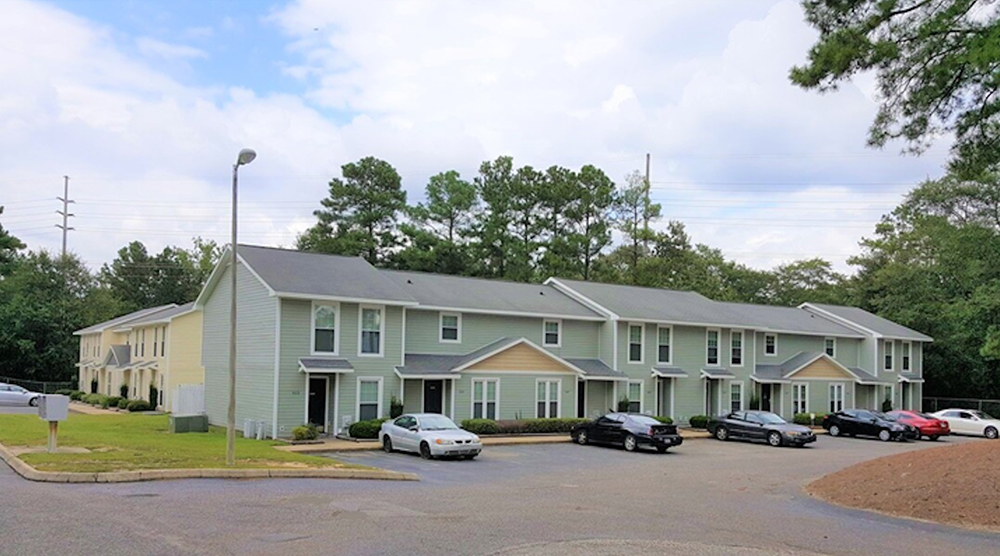News: Financial Digest
Posted: November 12, 2009
How to deal with CMBS loans: Performing or non performing
Once upon a time, there was a man from Bedford Falls who saw a lovely cape on Sycamore St. and wanted to buy it for his family. He hopped into his car and dashed down to Bailey Savings and Loan. George, the banker, greeted him with a warm smile and a handshake. Within the half hour, the man left the bank with the cash he needed to make his purchase.
One short year later, the grain business in Bedford Falls went bust, the little home on Sycamore St. went dark and the Bailey Savings and Loan was in serious financial trouble. When the two men saw each other next, George, again, greeted the man with a warm smile and shook his hand.
Where is your warm friendly banker today? Unlike the early 1990s, when you could simply call your lender and set up a lunch meeting to discuss your loan and your errant slice shot, today's environment lacks personal touch. If you were like so many borrowers from 1995 to 2007 and tapped into the red-hot conduit/Commercial Mortgage Backed Securities (CMBS) loan market, you may now find yourself without a lending relationship. CMBS lenders are not underwriting new loans and although the government is trying to jump start lending, it is widely believed that CMBS is still a long way away from coming back. Often, there is a formidable gap between your current loan balance and refinancing proceeds available. Adding to the CMBS borrower's confusion is the lack of access and knowledge about their loan administrator. These loan servicers are no more familiar to borrowers than the Wizard of Oz. Transparency in the market place has evaporated. Many loans and loan pools have been sold to investors. Investors consist of multiple players who have purchased pieces or "tranches" of loans rather than whole loans.
The CMBS servicing mechanism, like the investors who own CMBS, is also complex and difficult to navigate. Servicing involves multiple parties and bifurcated responsibilities. The master servicers are responsible for the administration and management of performing loans including payment processing, tax and insurance escrows, payoffs, and asset management. The CMBS special servicers are responsible for the collection, management, resolution, foreclosure and disposition of defaulted loans. The inability to understand and respond to the servicers process leaves borrowers stalled; unable to negotiate the loan extensions, modifications, and reductions they need to continue to successfully own and operate their property.
The positive news is that CMBS loans have been restructured with both master and special servicers. Loan maturities have been extended, forbearance agreements reached and discounted payoffs have been achieved.
Whether you have a loan that is performing or non-performing, a results oriented approach includes a 1) Comprehensive property valuation and cash flow using Net Recoverable values on an NPV basis; 2) Capital structure/refinancing plan; 3) Asset condition assessment; 4) Familiarity with the pooling-and-service agreement (PSA) for the specific securitizaion you loan is in; and 5) Borrower's consistent commitment to cooperate.
For maturing loans, borrower or borrower's representatives should make contact with the master servicer at least three to six months prior to loan maturity and be prepared to submit a Complete Property Package. For defaulted loans, borrower or borrower's representative must immediately engage in a solutions oriented dialogue with the special servicer.
Since special servicers have the ability to restructure, modify, or extend defaulted loans; change interest rates; forbear on collections; write down principal; extend maturities; accept discounted payoffs; sell the defaulted note; accept deeds in lieu of foreclosure; or foreclose and sell the real estate, it is critical to work in lock step with the servicer. In order to be well represented at the negotiation table, the borrower must provide the servicer with the critical information he or she needs to execute the best strategy for the loan.
The special servicer determines the best strategy for each defaulted loan based upon the guidelines set forth in the PSA. This detailed document defines the process by which the special servicer evaluates alternative resolution strategies. Since there are multiple bondholder classes involved in each CMBS transaction, the servicer is obligated not only to fairly represent the first loss holder, but all the bondholders.
To date, it has been the prepared, persistent and patient borrower who has yielded the best results restructuring CMBS loans with servicers.
David Goldfisher is a principal at The Henley Group, Dover, Mass.
Tags:
Financial Digest
MORE FROM Financial Digest
Preservation of Affordable Housing secures $23.5 million in financing from Rockland Trust and Citizens Bank
Cambridge, MA The nonprofit Preservation of Affordable Housing (POAH) has secured $23.5 million in financing from Rockland Trust and Citizens Bank to transform a 150-year-old, underutilized church complex into housing. The project will ultimately create 46 affordable family-sized apartments.

Quick Hits
Columns and Thought Leadership

Conn. hospitality market: A technical appraisal perspective on market dynamics and valuation challenges (2019-2025)
The Connecticut hospitality market has demonstrated uneven recovery patterns between 2019 and 2025, with boutique and historic properties achieving $125 RevPAR in 2025, up 8.7% from the 2019 level. Coastal resort properties achieved a $105 RevPAR in 2025, representing 10.5% growth since 2019. Casino corridor properties maintained modest growth with RevPAR improving 4.5% to $92 in 2025.

Examples of investors who used Kay Properties for legacy and estate planning purposes for rental property/portfolios - by Dwight Kay
Preserving wealth across multiple generations requires strategic planning, foresight, and the right investment vehicles. Delaware Statutory Trusts (DSTs) offer a powerful solution for families looking to build and protect their financial legacy and to efficiently plan for their estate.








